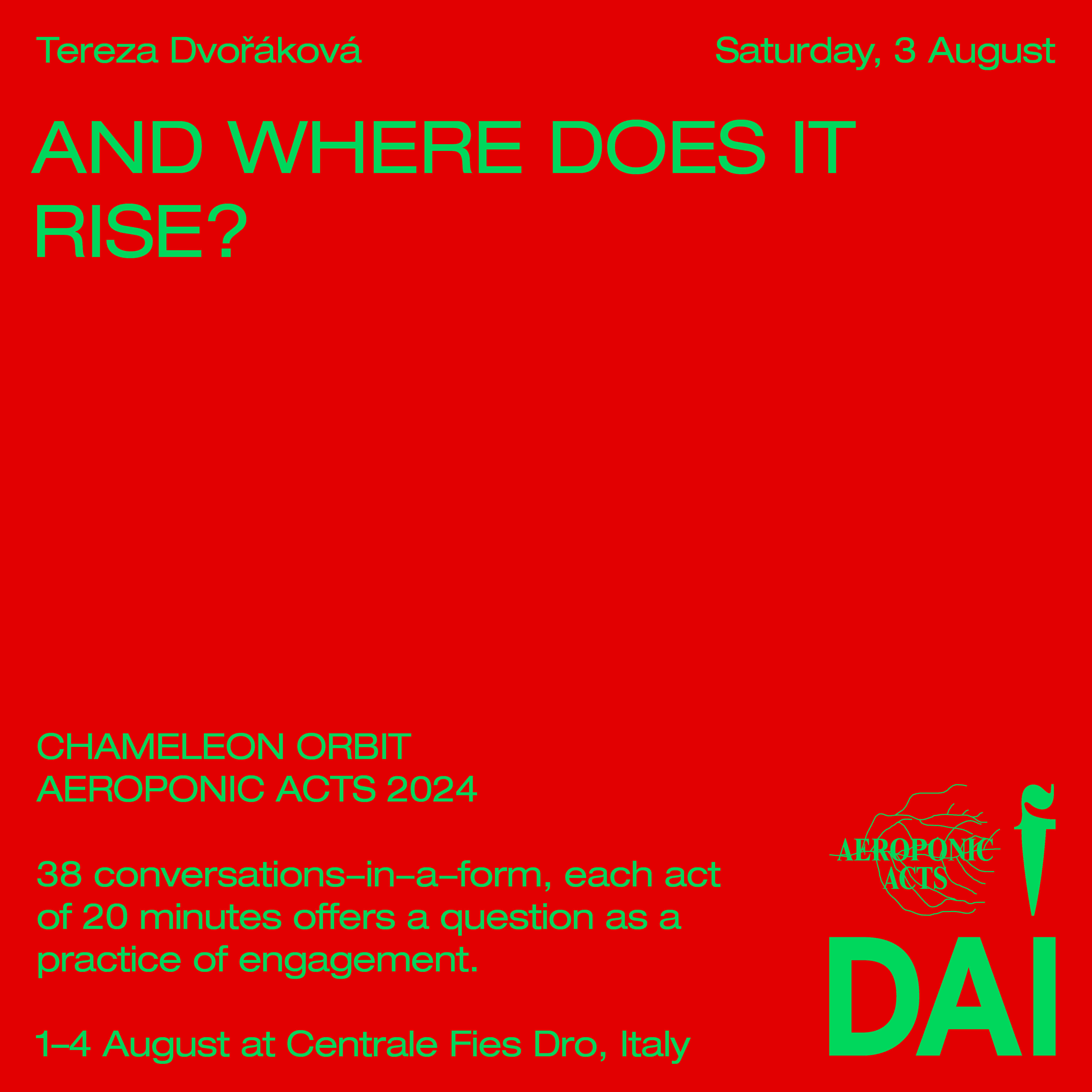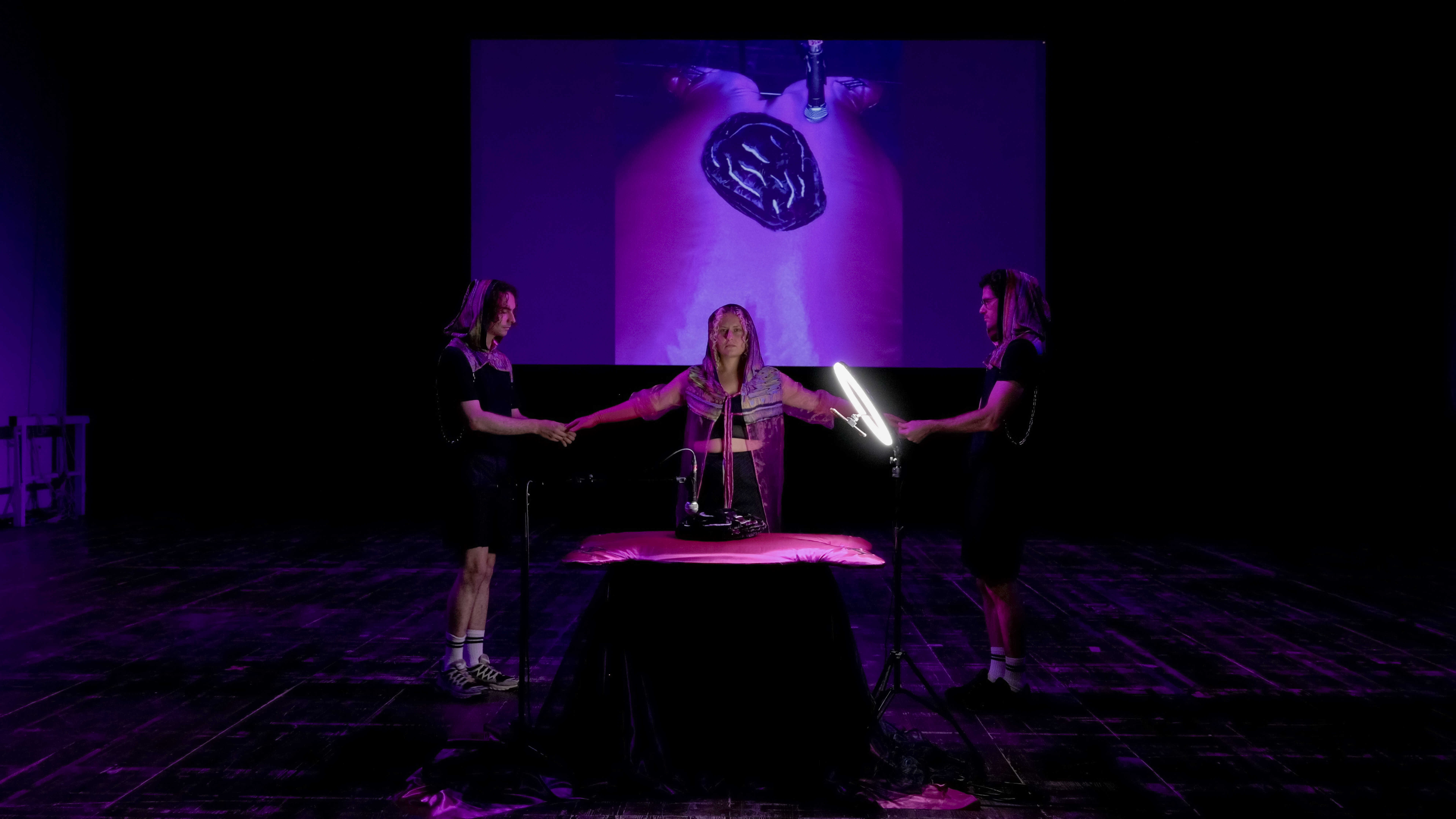Tereza Dvořáková ~ Where the Sun sets
A female priest in imposing robes conveys a ritual that transcends the human story. The object of veneration is not heroic suffering. Instead, we are confronted with a mystery that lies hidden at the Core, in the space beyond human pain. The symbolism of a Pit; an information flash drive containing the compressed potential of its own kind is hidden under glass in the altar composition. The more something is hidden, the more strongly it is present.The gradual uncovering and re-shrouding of the mystery is the main essence of the mass. Placing the relic into the casing of itself is an act that adores the symbolic power preserved in the form of an artifact.
We are not here and now.We are guided by insight into ourselves through the perspective of a greater whole. Our point of view changes at the moment our gaze meets the totality of the Sun. Layers of impossibility become the force in which the essence is preserved.
Silenzio.
The performance is a manifestation of objecthood, materiality, and audiovisual technology blending with the Aesthetics of Dis-Appearance. Main source of inspiration is the visual canon of the Catholic Church; its miracles, and the mysteries that are strengthened by their amplification, endless narrative self-reproduction and fetishization of relics and roles.
AEROPONIC ACTS 2024 ~ Chameleon Orbit
About Tereza Dvořáková


